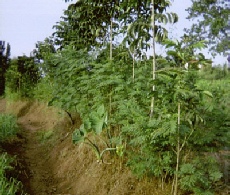
© 2012 -
This site does not use cookies



Why Goats
(especially dairy goats)
 Nutrition
Nutrition
• Milk provides fat and protein which are deficient in the diet of poor rural Ugandans, but most do not have access to it. more...
• Goats milk is particularly suitable for infant feeding. more...
• Goats milk is particularly useful when HIV+ mothers wean babies early to prevent
mother-
• Many Ugandans react to cows milk but can take goats milk. more...
Income
• Many goat keepers are able to sell milk to neighbours, to get a steady daily or weekly income. more...
• Kids from good blood lines command a premium if sold for breeding.
• Kids from dairy-
• Commercialisation is feasible if many keepers cooperate. more...
 Environment
Environment
• Where arable farming is practiced goats are not allowed to roam freely, and so do not become an environmental hazard. more...
• Planting environmentally beneficial trees becomes more attractive when the leaves can find use as goat fodder. more...
• The manure from the goats is a very valuable by-

Manageable
• Goats can be kept even if the land available is small; and even by people with no land at all. more...
• Including goats on a smallholding does not reduce the productivity of arable production and usually increases it. more...
• Time needed to care for a goat does not prevent school attendance.
• Construction of a goat house is within the means of a poor family.
• 50% cross-
for breed improvement.